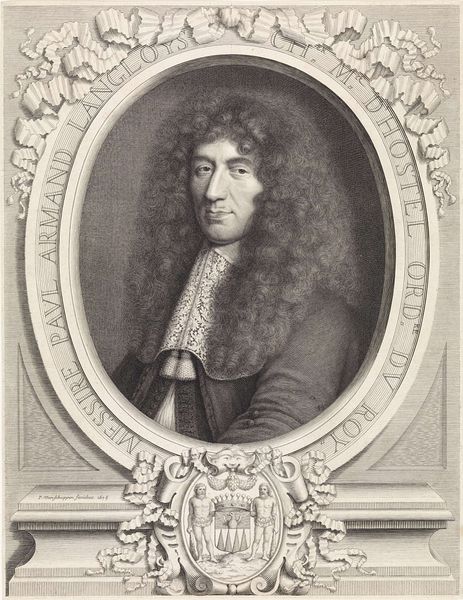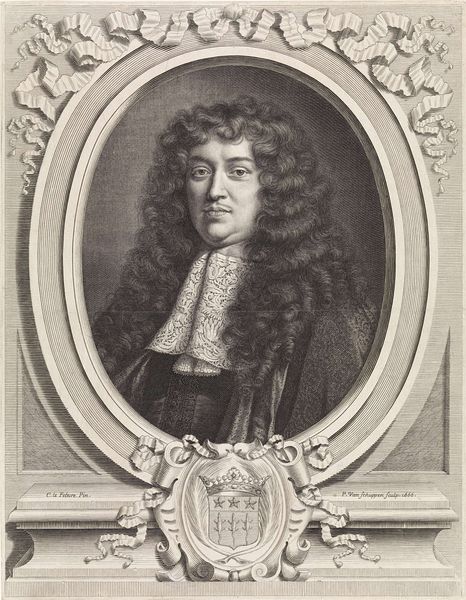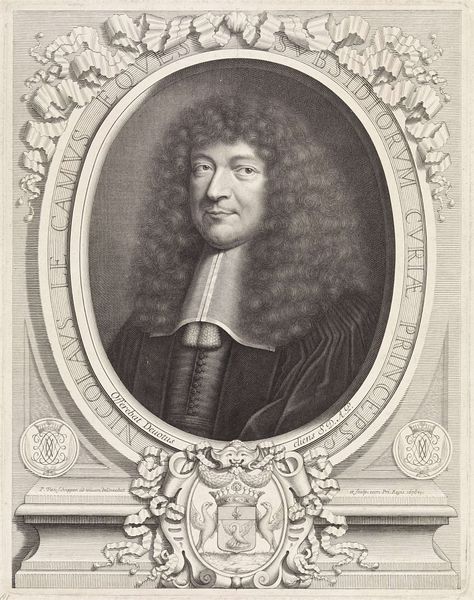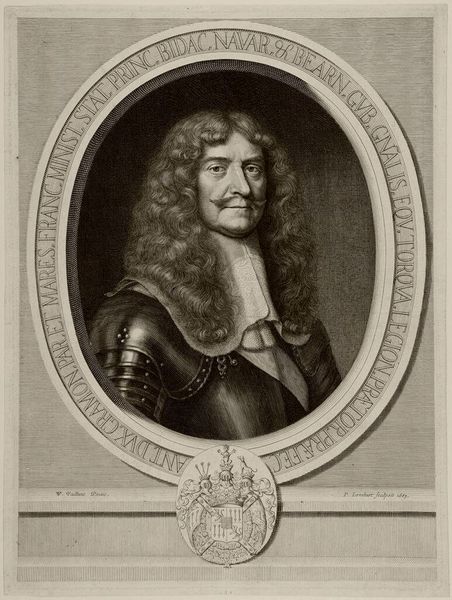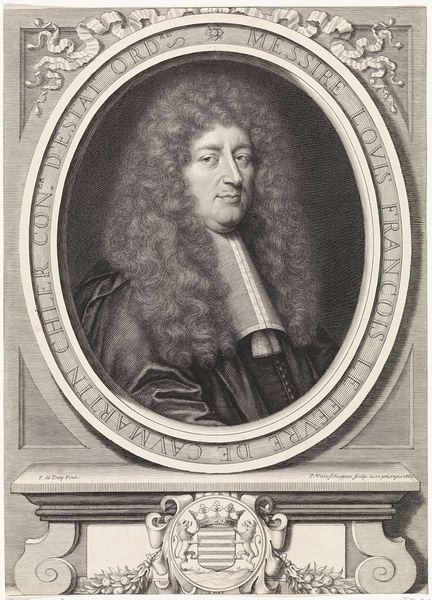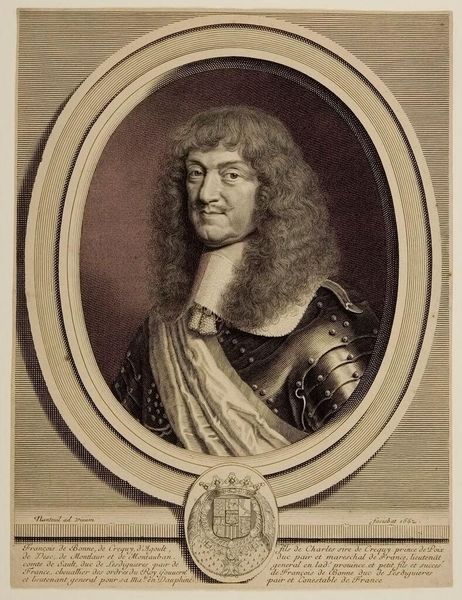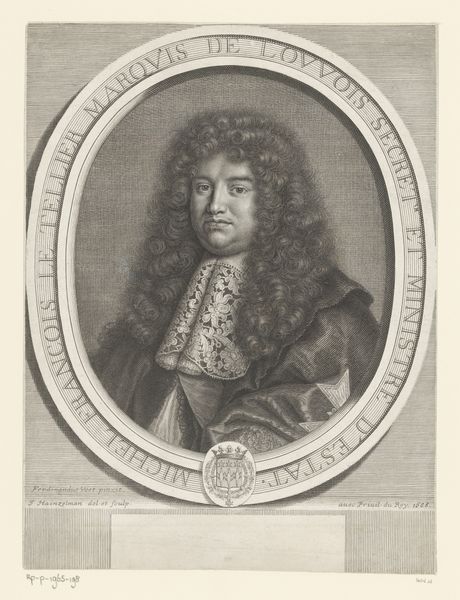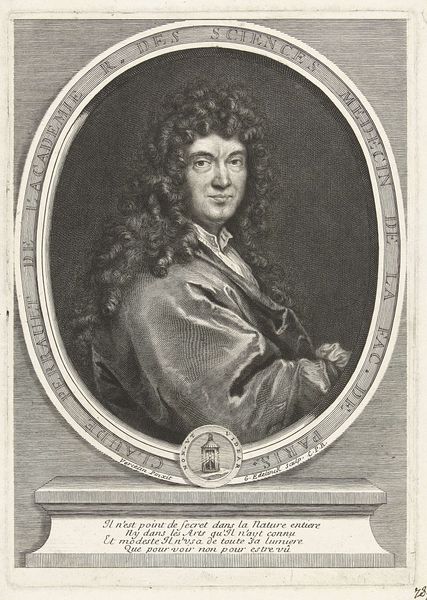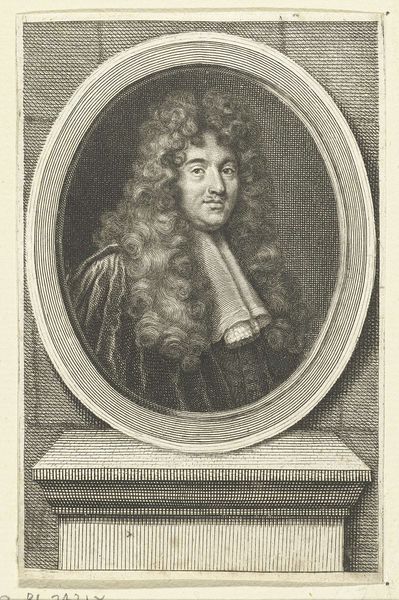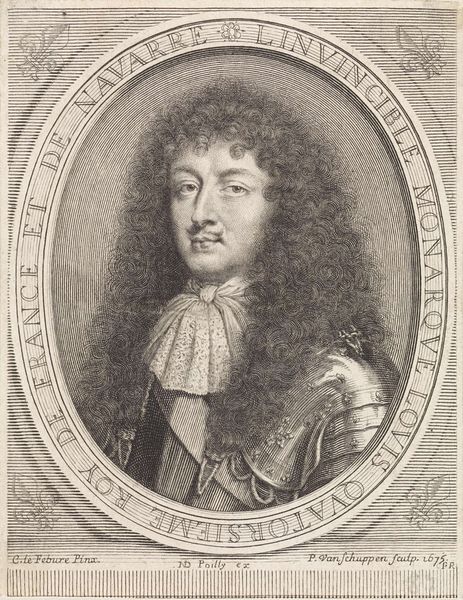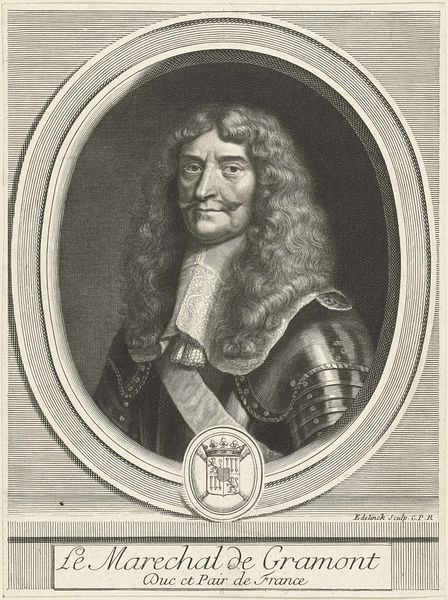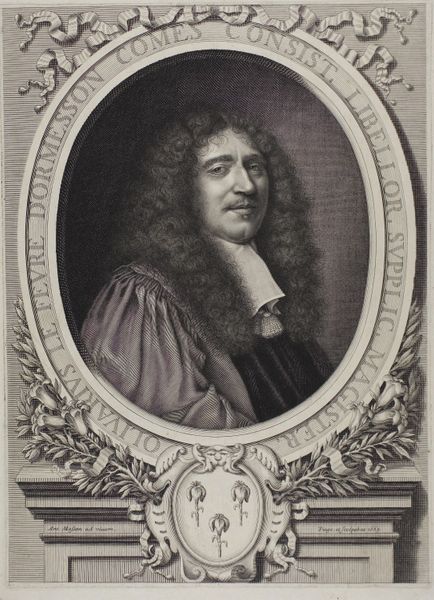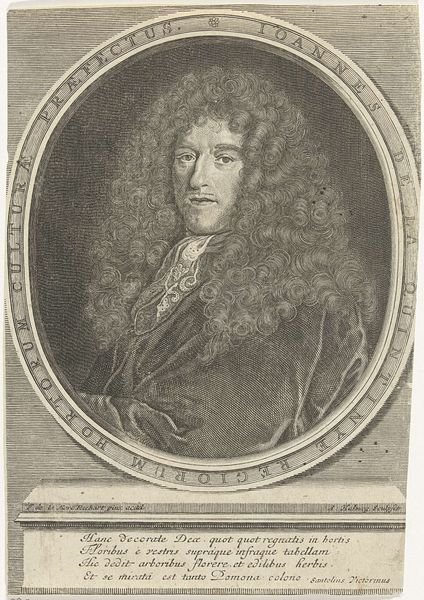
Portret van François Zwilling de Besson op 46-jarige leeftijd 1676 - 1678
0:00
0:00
pietervanschuppen
Rijksmuseum
print, engraving
#
portrait
#
baroque
# print
#
historical
#
engraving
Dimensions: height 284 mm, width 207 mm
Copyright: Rijks Museum: Open Domain
Editor: We’re looking at a piece called "Portret van François Zwilling de Besson op 46-jarige leeftijd," created between 1676 and 1678 by Pieter van Schuppen. It's an engraving. The detail is astonishing! What immediately strikes me is how this portrait tries to assert authority through the very meticulous representation of Zwilling's elaborate clothing and wig. How do you read into this work? Curator: Indeed. This portrait, situated within the Baroque era, is more than just a likeness; it’s a carefully constructed statement of power and status, rooted in historical and social dynamics. The intricate detailing of Zwilling’s attire signifies his elite position, but we must also consider what that position *means* within the larger power structures of the time. Who was benefiting from these aristocratic structures, and at whose expense? What narratives were privileged and amplified, and whose voices were suppressed? This portrait can spark a powerful contemporary dialogue when understood this way. Editor: That's a really helpful context. So, it’s less about appreciating the technique itself, and more about questioning the social implications of its display? Curator: The technique is impressive, absolutely, but it serves the ideologies of the period. Van Schuppen, by portraying Zwilling in this specific manner, is complicit in perpetuating a certain socio-political order. Understanding this challenges us to critically examine how art can be both a reflection and a reinforcement of power structures. How do you feel about that complicity, knowing now the subjects of Baroque aristocratic society? Editor: I find it slightly unsettling, to be honest. But it makes the image far more compelling than just an impressive engraving of a wealthy man. Curator: Precisely. Recognizing the intersections of art and power enables us to engage with history through a more critical, questioning lens, revealing layers of meaning we might otherwise overlook. Editor: I'll definitely think about portraits differently now. Thank you. Curator: It's a pleasure to unravel these historical power dynamics through art with you.
Comments
No comments
Be the first to comment and join the conversation on the ultimate creative platform.
